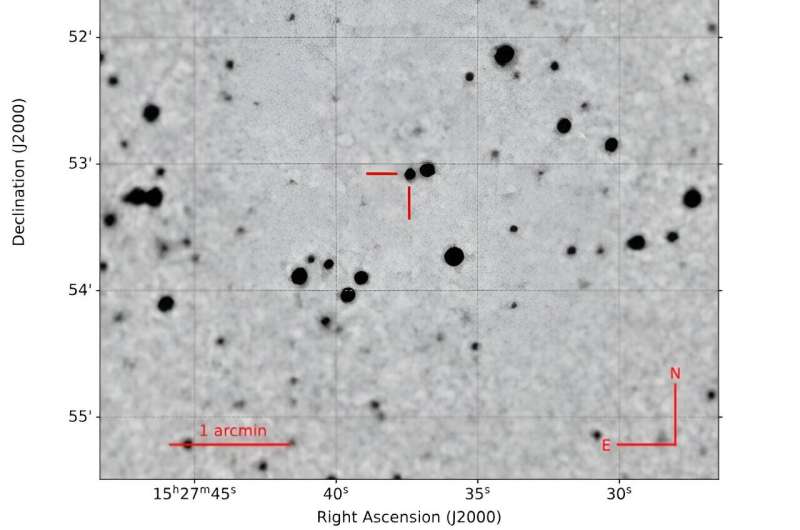March 29, 2024 report
This article has been reviewed according to Science X's editorial process and policies. Editors have highlighted the following attributes while ensuring the content's credibility:
fact-checked
preprint
trusted source
proofread
New cataclysmic variable discovered by astronomers

By analyzing the data from ESA's XMM-Newton and Gaia satellites, astronomers from the Leibniz Institute for Astrophysics Potsdam (AIP) in Germany and elsewhere have detected a new magnetic cataclysmic variable system, most likely of the polar type. The finding was reported in a research paper published March 21 on the pre-print server arXiv.
CVs are binary star systems comprising a white dwarf and a normal star companion. They irregularly increase in brightness by a large factor, then drop back down to a quiescent state. Polars are a subclass of cataclysmic variables distinguished from other CVs by the presence of a very strong magnetic field in their white dwarfs.
A team of astronomers led by AIP's Samet Ok, has identified a new cataclysmic variable, which received designation XMM J152737.4-205305.9 (or XMM 152737 for short), by correlating the CV candidate catalog released by Gaia Data Release 3 (DR3) with the XMM-Newton archive.
"In order to detect and identify new magnetic cataclysmic variables, we correlated the source coordinates in this catalog [DR3] within the XMM-Newton's data archive," the researchers wrote in the paper.
According to the study, XMM 152737 has a singular period that corresponds with the synchronous rotation characteristic observed in polars. The system displays harmonics in its power spectrum and has a relatively short orbital period, which is usually observed in known polars.
The source was found to showcase two distinct dips that exhibit a recurring pattern with a precise period of approximately 112.4 minutes. The scientists explained that such dips may be caused by an eclipse of the white dwarf by the donor star or an obscuration of the accretion region on the white dwarf by the accretion stream.
The observations show that XMM 152737 has prominent emission lines corresponding to hydrogen and helium. This finding strongly suggests that the object is a polar-type cataclysmic variable.
The study found that XMM 152737 is located some 3,770 light years away from the Earth and its X-ray luminosity is estimated to be between 30 and 60 nonillion erg/s. Assuming that the system is eclipsing, the authors of the paper calculated that the white dwarf and the secondary star have masses of 0.8 and 0.14 solar masses, respectively.
Summing up the results, the researchers noted that further observations of XMM 152737 are required in order to determine the origin of the observed dips in this system. This could shed more light on the properties of this cataclysmic variable and confirm its polar classification.
More information: Samet Ok et al, Discovery of the magnetic cataclysmic variable XMM J152737.4-205305.9 with a deep eclipse-like feature, arXiv (2024). DOI: 10.48550/arxiv.2403.14278
Journal information: arXiv
© 2024 Science X Network




















